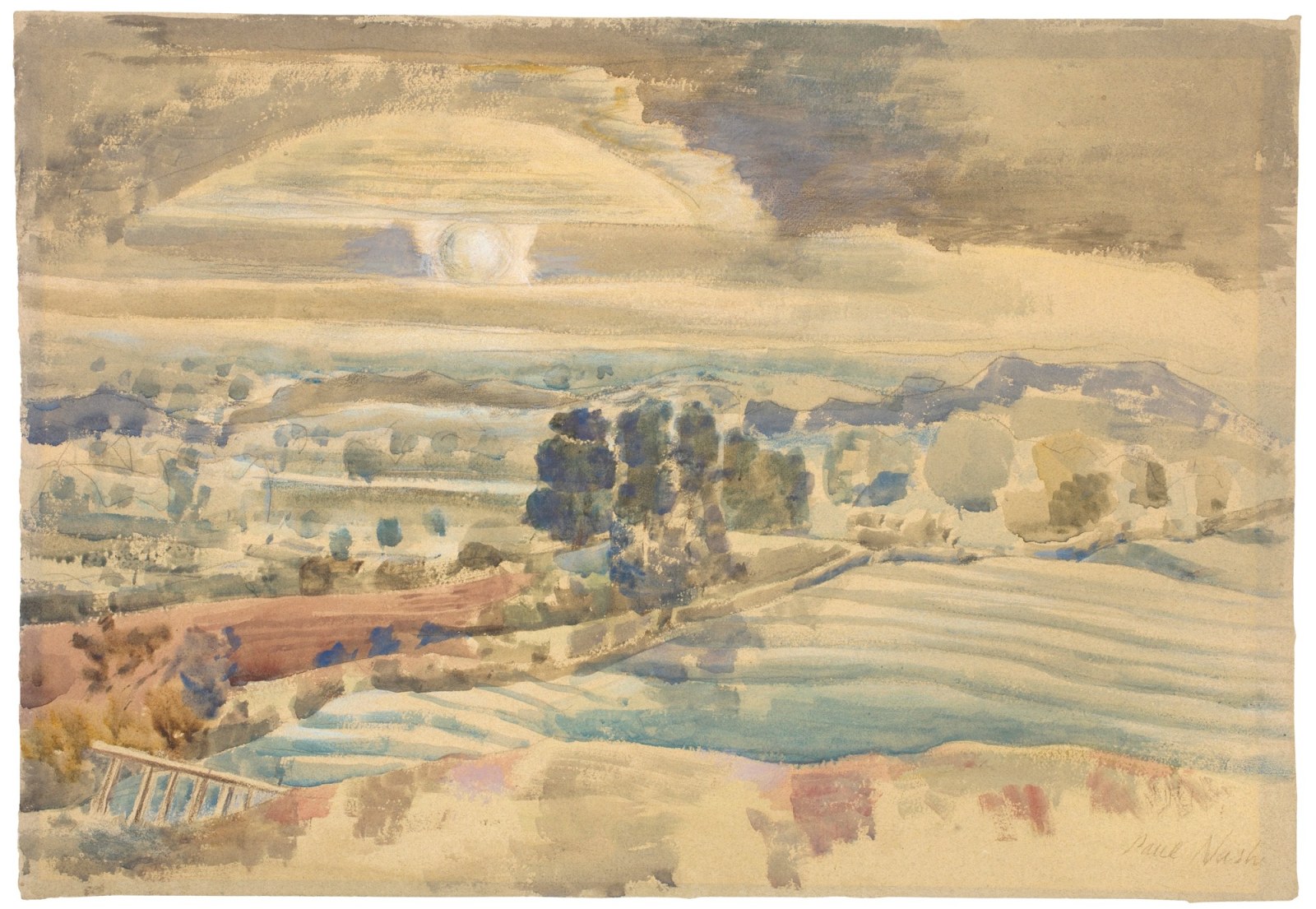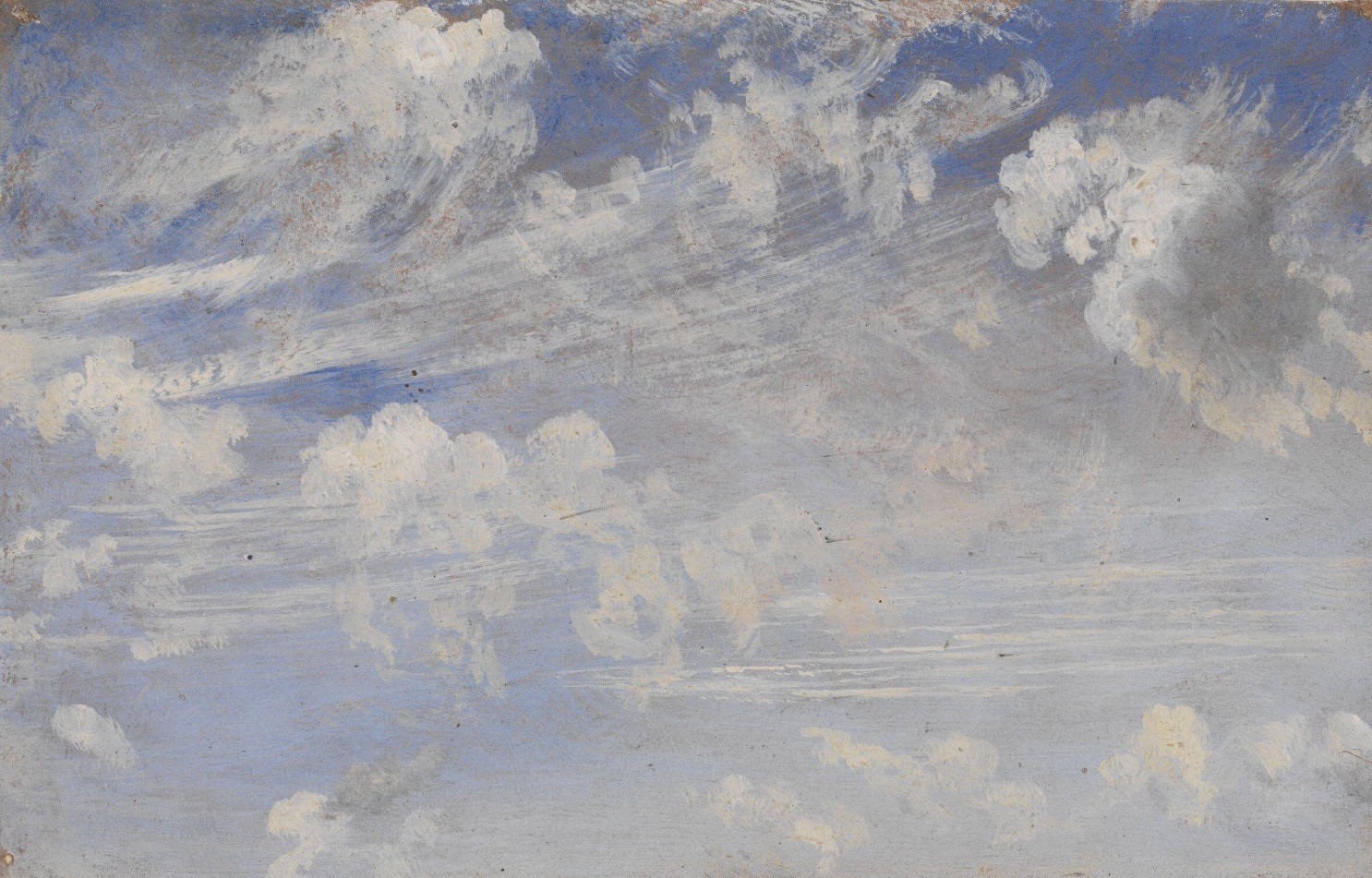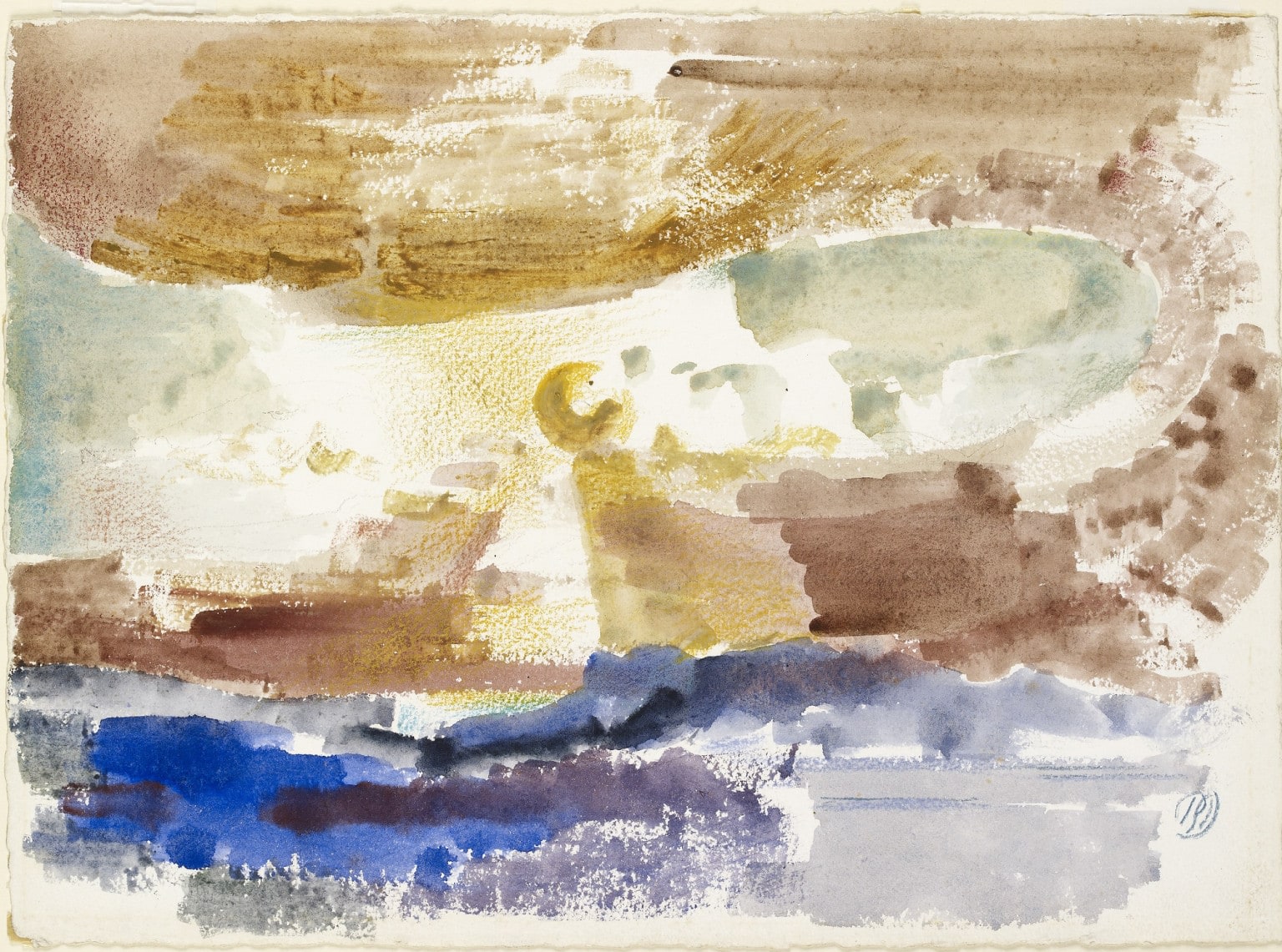Paul Nash's view of the world was transformed by an imaginative grasp of landscape history, an interest in druidic ritual, and an awareness of Christian Science. An undertow of these interests is apparent in his poetic landscape art.
InSight No. 105
Paul Nash, Sunrise over Valley, 1943

For Nash (1889-1946), the symmetry of the seasons and the rise and fall of the day were not accidents. They revealed a profound underlying force which held the world together. He first used the imagery of sunrise to metaphorical effect in his work as an Official War Artist in the Great War. We Are Making a New World envisions the waste of no man's land washed by the harsh light of dawn. Though his mature work developed through phases of bucolic naturalism, surrealism and modernist abstraction, in the later 1930s and 1940s Nash returned to the imagery of sunrise and sunset, moonrise and moonset, as a semi-mystical vehicle to explore how locale and the cosmos intersect.

Nash first met Clare Neilson in 1934. They became close friends, sharing an interest in druids and the occult, and beginning in June 1938 Nash paid several visits to Clare and Charles Neilson's Gloucestershire home, Madams, near the town of Newent. Though at first his interest gravitated towards the Forest of Dean nearby, as his health declined and the immediate surroundings of Madams came to his attention he started painting remarkable views across the county. Sunrise over Valley is one such watercolour, looking out towards the Cotswolds in the east.

Nash's sensibility for shifting effects of light and shadow in a cloudscape was unmatched in his generation. The shape of a cloud affects how it reflects sunlight, and this interconnection of light and form is what makes the subject so challenging to depict. As clouds shift, so do the relative areas of light and shadow. In Sunrise over Valley, Nash observed and evinced these relations with an attractive sense of colour and design. To create a dazzling highlight in the sun's orb, grey-blue touches of a dry brush are placed to either side of it to heighten the contrast. The arc of light above the sun is at once naturalistic in its description of actual appearances, and weighted with poignance, as though a canopy had been erected to mark a momentous occasion.

Nash's approach resonates with the example set by John Constable a century earlier. After Sunrise over Valley, Nash further developed his studies of cloudscapes in watercolours which register a strong awareness of Constable's work. The horizon is cut away, the picture fills with cloud, and the proportions of the scene - however small the sheet of paper - assume an epic magnitude. Colour grew more saturated and less naturalistic, just as Nash transformed the cloudscape's morphology into a single expressive entity, writhing with some strange internal impulse.

Sunrise over Valley was owned for many years by Nash's last art dealer Dudley Tooth, whose family firm gained a reputation for showing contemporary British artists like Nash and his contemporary Stanley Spencer. In 1938, after several unsatisfactory years of exhibiting at Leicester Galleries and Redfern Gallery, Nash decided to seek a sole agent to represent him both during and outside of his solo exhibitions. (Previously the Leicester Galleries held solo exhibitions of his work, while Redfern sold his work outside of these exhibitions.) It was a mutually beneficial arrangement which allowed Nash to defer the tiring business of self-promotion and instead focus upon his art. Sunrise over Valley has never been exhibited and was acquired privately from Nash by Tooth shortly after it was made.

Images:
Paul Nash, Sunrise over Valley, 1943, watercolour and pencil on buff wove paper, 37 x 55 cm | For Sale
Paul Nash, We Are Making a New World, 1918, Imperial War Museum, London
John Constable, Study of Cirrus Clouds, circa 1822, Victoria & Albert Museum, London
Paul Nash, The Sun Descending - Study 3, 1945, Ashmolean Museum of Art and Archaeology, University of Oxford




